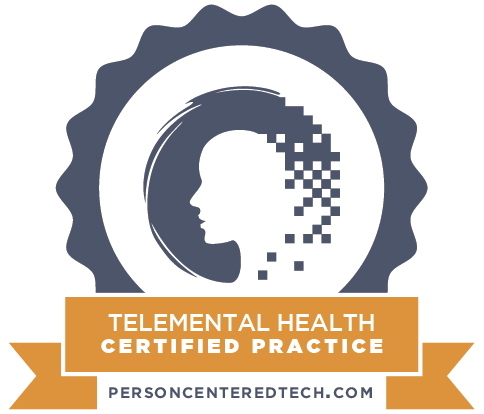What is Music Therapy?
Definition of Music Therapy:
“Music Therapy is the clinical and evidence-based use of music interventions to accomplish individualized goals within a therapeutic relationship by a credentialed professional who has completed an approved music therapy program. Music therapy interventions can address a wide variety of healthcare and educational goals” (American Music Therapy Association www.musictherapy.org)
Definition of a Music Therapist:
“Music Therapists’ objectives are to determine and utilize music therapy approaches that effectively aid in the restoration, maintenance, and improvement in mental and physical health. Music Therapists believe in the dignity and worth of every person. They promote the use of music in therapy, establish and maintain high standards in public service, and require of themselves the utmost in ethical conduct.” (American Music Therapy Association www.musictherapy.org)
- Must have a bachelor’s degree or higher in music therapy from an AMTA approved college/university
- Must hold the MT-BC credential issues through the Certification Board for Music Therapists and requires continuing education. Some states require licensure
- Evidence-based health profession with a strong research foundation
- Music Therapy degrees require knowledge in psychology, medicine, and music
I became a board certified Music Therapist in 2006 and have maintained my credentials ever since. At PCS, I am supported in combining my doctorate of psychology with my music therapy board certification.
Potential Goals:
- Improve communication
- Stress management
- Promote wellness
- Pain reduction
- Emotional expression and regulation
- Enhance memory
- Improve social interaction and teamwork
- Increase self-confidence, self-esteem, self-worth, and self-compassion
History:
- Has been used in the Unites States since the late 18th century to treat physical and mental ailments – usually musicians who played for the patients
- The concept became increasingly popular with returning WWI and WWII veterans
- 1940’s = began the formal organization and education systems for MT
- 1950’s = primarily worked within the mental health field
- 1960’s = expanded to include sensory impairment; developmental and physical disabilities
- 1970’s = included geriatric, medical conditions, those incarcerated
- 1983 = Certification Board of Music Therapy was founded
- Current = work in all settings, with all people, an abundance of interventions, and for all reasons.
Neurologic Music Therapy (NMT):
- NMT was researched and developed by the Academy of Neurologic Music Therapy in Fort Collins, Colorado. Dr. Michael Thaut, PhD
- 1999 = The first certification program of NMT was held
- “Treatment techniques are based on the scientific knowledge of music perception and production and the effects of nonmusical brain and behavior functions.”
- There are six key areas of focus: Speech & Language, Sensorimotor, Cognition, Memory, Executive Function, and Psychosocial Behavior
- There are 20 different interventions within NMT
Potential interventions:
- Musical improvisation
- Songwriting
- Lyric analysis
- Guided imagery through music
- Music and movement
- Music listening
- Vocal warmups/breathing exercise for breath support
- Identifying emotions in music
- Exploring mental health through music
- Exploring addiction through music
- Internal cadence
- Playing an instrument
Resources to learn more about Music Therapy and impacts:
- American Music Therapy Association: www.musictherapy.org
- An Introduction to Music Therapy: Theory and Practice by William B. Davis
- Every Brain Needs Music: The Neuroscience of Making and listening to Music by Larry S. Sherman and Dennis Plies
- How Music Heals Us by Kim Cannan
- Music Heard so Deeply by Betsey King
- Musicophilia: Tales of music and the Brain by Oliver Sacks
- Music Therapy: A Look into the World of Healing Sound by Angelo Molino This is Your Brain on Music by Daniel J. Levitin
It’s been a long, hot summer here in the greater Phoenix area as well as so many other places in our world. I miss my morning walks, which I needed to pause when the low temperatures rose into the upper 80’s to low 90’s. Recently, I got to travel out of town to a cooler area for a few days, and I was so grateful to get to move comfortably around the outdoors again, and to focus on things not only outdoors, but outside myself.
Early in the pandemic, I learned about “awe walks.” Maybe you have heard of them as well? An awe walk is a simple, convenient, no-cost yet powerful way to care for yourself not only physically, but mentally. It’s a walk where you mindfully shift your focus to what is going on outside of you and all around you. On an awe walk you can invite yourself to listen, see, smell, feel (and sometimes even taste) the world around you. In my neighborhood, I like to walk along the canal and see what kind of birds are there. Is this the season for new ducklings? Is that a turtle I see resting on that rock? Oooh, what’s that smell? My neighbor must be grilling dinner. Aaah, I love the feel of the breeze on my skin. I like the sound my steps make on the gravel, and the plop I hear from the fish when they briefly jump out of the water. I always hear those fish way more than I get to actually see them.
Awe walks allow us to escape from our houses and take some time away from the mail, the chores, and the other routines that await us. They allow us to stretch our legs and get our blood flowing. They also allow us time to escape our inner world of worrying and planning—the exhausting way we can focus so much on the past and the future. An awe walk invites us to be in the present, even if it’s just a 15 minute stroll around the block. A research study from a few years ago showed that awe walks increased feelings such as compassion and gratitude. This makes sense because getting outside of ourselves more makes us more able to connect with others and appreciate the world around us.
There are many ways to exercise mindfulness, and to quiet my busy mind. I have tried other healthy practices during this sweltering summer, but I can’t wait for the temperatures to drop a few more degrees so that I can get back to my morning awe walks — even if I have to get up a little earlier to fit them in. Are you with me? In the meantime, stay cool and be well!
Burnout seems to be a hot topic in recent years, but what really is it and how can we hopefully improve our individual experiences?
According to the ICD-11 burnout is defined as “a syndrome conceptualized as resulting from chronic workplace stress that has not been successfully managed” (World Health Organization, 2019). The ICD-11 also characterizes it with the following three dimensions:
- Feelings of energy depletion or exhaustion;
- Increased mental distance from one’s job, or feelings of negativism or cynicism related to one’s job; and
- A sense of ineffectiveness and lack of accomplishment.
Stress, sometimes confused with burnout, is also due to external factors in our lives. The biggest difference, though, is that normal day to day life stress generally has an ending point, whereas burnout is born out of chronic stress that does not cease. We all experience stress at some point and some stress can even be healthy in that it may motivate us. Burnout on the other hand is not something we all experience and it is often seen in helping professions (though not limited to this). The ICD-11, though, does specify that burnout only refers to “phenomena in the occupational context” and not any other context.
If this is resonating with you, it might be time to look at what might be helpful for you in regard to self-care. Some might argue that talking about self-care in regard to burnout places the blame on the individual experiencing burnout, rather than the larger systemic work-place, which I agree with in many ways, but I always come back to the question: What is in my control right now? This is not to say that the larger systemic issues do not matter, but, while we all hopefully advocate for systemic changes, how can you help yourself today? Personally (and though I know it is not a “fix”), self-care behaviors that help me the most are taking time off and reaching out for support from colleagues. It took me over two years of working at PCS to take one entire week off, which was likely a part of what led to the burnout I am experiencing now. Learning how to rest during my time off has been (and still is) a challenge for me as well. When I would take time off, I would fill all the time with activities, friends or family. As my burnout has increased over time, I am seeing now how valuable true rest is to my mental health and my work as a whole.
My biggest hope is that we can all come together to support each other when burnout begins. I know for me, before I started talking about it, I was feeling isolated and would beat myself up thinking that it was just me. I know now that it is not just me and reaching out continues helps immensely.
References
World Health Organization (2019). International Statistical Classification of Diseases and Related Health Problems (11th ed.). https://icd.who.int/
A sex surrogate partner is a trained and certified professional that helps a client explore and overcome physical, emotional, and/or social issues around intimacy and sex.
The role of a sex surrogate is to help individuals with issues such as sexual dysfunctions, shame, negative body image, dysmorphia, anxieties about touch, sex, intimacy, disability, head, brain, spine injuries or other medical issues, autistic features, confusion about sexual orientation, lack of self-confidence, experience, pelvic and/or genital pain, or any physical, emotional, sexual trauma, as well as other triggers. A surrogate partner is utilized in conjunction with a sex therapist and always remains in communication with both the client and their sex therapist.
Sex surrogate partners provide a safe and structured environment and might help with relaxation, eye contact, sex education, body image, communication, sharing painful memories/vulnerabilities/insecurities, relating to another person, body mapping, nudity, giving and receiving touch, genital-to-genital contact, etc. Having said that, sex surrogacy does not always involve sex or any sexual interactions and is not necessarily genital focused. As mentioned before, it is about developing skills and enhancing healing according to the client’s boundaries and needs. When the therapy goals have been met, sex surrogacy therapy ends.
Unlike a sex surrogate partner, a prostitute’s goal is providing sexual stimulation, and satisfaction and one can revisit a sex worker, as they like. In addition, while paying for sex is illegal in most states, law does not prohibit sex surrogacy therapy.
Sex surrogacy therapy is not recommended to people that are engaged in a relationship. Instead, sex therapy (which is talk therapy with assigned exercises to do at home) is more beneficial for the individual and/or the couple.
***The movie “The Sessions” (2012) with Helen Hunt and John Hawkes tells the story of a client with sex surrogate Cheryl Cohen-Green.
“Return back to yourself, you have been away far too long.”
– Author Unknown
Humans rely on their primary caretakers longer than any other mammal. This is due to the time it takes for the human brain to fully develop, including emotionally and socially. In those earlier years, we relied on our caregiver continuously. We were most vulnerable. Without caregivers, we would have died. Instinctively, we knew this. They carried us from here to there, changed our diapers, fed us, etc. Good, bad or ugly, we needed them. Most of us learned early on that to share our inner world was too dangerous because it displeased our caregiver, our lifeline. We kept a close watch for clues about what their likes and dislikes were, what they responded to, and how they communicated. We learned what was safe to share and what was too threatening to our survival. With that, we learned to become who we had to become to get our needs met. In doing so, we abandoned ourselves.
Now that we are adults and we do not need a caregiver, most of us have just kept walking away from those unresolved childhood experiences (i.e., big feelings, negative beliefs, and unmet needs). We want nothing to do with our childhood if it means rehashing all that happened back then and actively recalling in our bodies the subsequent emotions that feel impossible to hold in real time. However, when we, as adults, push our feelings and needs aside, we push our inner child aside. We demand from our inner child that they carry the pain alone. Consequently, we as adults, we become the ones who neglect that inner child. We become the ones who continue to abandon ourselves and leave this wounded part behind while we escape with various methods. We move farther and farther from ourselves until we wake up with this incredible divide between our adult Self and inner child Self. This great void cannot be filled by any number of accomplishments or external adoration, and our addictions tend to do us more harm than good.
Within ourselves is our creativity and our spirituality. It is a way we connect to the world around us. Unfortunately, many of us do not know ourselves. We often do not know what we really want or need. We are disconnected from ourselves all because of the primal need for survival in an environment that did not support emotional intelligence. Moreover, we grew up in a larger environment that likely reinforced our most negative beliefs about ourselves. Our nervous systems developed to become sensitive to the biggest threat in the room (i.e., traumatic events or attachment wounds). Many of us have spent much of our adult lives hypervigilant toward the potential of these events or wounds reoccurring in our present lives and most of us do whatever is necessary to keep this part of ourselves away from our consciousness. Still, we find ourselves continually facing the same challenges and feeling chronically disconnected. It is possible that there is something to learn here.
If we are to thrive as adults in both our present relationships and endeavors, we may need to return to ourselves and create internal awareness and connection. If we are to have a strong, positive self-esteem (a valuing of ourselves) and peace within ourselves (trust), we must learn to take responsibility for our own healing journey and nurture a relationship with ourselves. This nurturing from our adult Self to our inner child Self can create the internal environment of feeling grounded, centered, Balanced, and empowered.
When we have a secure attachment to Self, we look less and less into our external environment for validation. Suddenly, we go internally for our worth, our answers, and our deepest connection. This sort of relationship with Self can improve all the other relationships in our lives. When we know ourselves, we can use that knowledge to become more effective lovers, partners, parents, employees, colleagues, friends, whatever. When we prioritize the relationship with Self, we are prioritizing our creativity, spirituality, and our connection with others. We practice with ourselves how to empathize rather than fix, how to stay curious rather than placing judgment, and how to choose connection rather than fear. We have practiced with ourselves how to express our needs and how to set and hold healthy boundaries. We feel our worth. We have created self-attachment. We no longer desperately need accolades or the attention and validation from others. We can still enjoy those experiences; however, our self-worth does not depend on it. Self-attachment takes a significant amount of pressure off the other relationships in our lives, particularly those closest to us. We cannot expect others to fill our cup. It is our responsibility as adults to fulfill those unmet needs we experienced as children, to process those subsequent emotions, and to challenge those negative beliefs that were forced upon us as a child that say, “I’m not good enough. I am inadequate. I have to do more if I want to be valued and Loved.”
The self-attachment model (SAM) is based in humanistic psychology and the theory of attachment. It is a way of conceptualizing the therapeutic journey and a way of developing an intimate relationship with yourself that can increase your overall quality of life by increasing your feeling of self-worth and self-trust. The model invites one to invest in this journey of self-awareness, self-healing, and self-connection, creating an inner environment that promotes the ability to thrive and self-actualize. More than a way of conceptualizing, SAM also offers a workbook for individual use that contains practical exercises to enhance self-attachment.* These practical exercises are not meant to be a replacement for therapy, but rather, to be used as a tool alongside of therapy with a mental health professional if needed.
Self-attachment starts with slowing down and feeling emotions. It asks you to lean into the difficulty. Recognize your emotions. Take time to experience them. Emotions can be a direct line to your inner child concerning communication. Through emotion, we gain information, direction, understanding, healing, movement, and experience. Most of us fear big emotions, as we were not taught how to hold and process them. Our cellular memories say that emotions can overwhelm us. When they come, it can feel intolerable. Some of us would rather die than feel our emotions, even if we die slowly through various forms of addiction and insidious ways of being that help us avoid discomfort. When we cut ourselves off from various feelings, however, we cut ourselves off from valuable information and connection that can lead us through life more fully and effectively.
Self-attachment invites you to get curious about yourself. Take the time to remember who your inner child was, what they felt growing up, what stories they told themselves, what they needed, how they coped with difficulty, what they dreamed about being, and what they called play. Take the time to find out who you are as an adult. Define what you value and what your vision is for your life. Identify your strengths. Conversely, get clear about negative patterns or tendencies that keep you misaligned from your values and goals. Take action to interrupt those cycles and ways of being that no longer serve you. Get creative about more effective ways you can get your needs met, ways that support your well-being, ways that are less harmful to your system, and ways that support the relationships in your life. Treat yourself like that lover you are so interested in and want to get to know
Finally, self-attachment is more than just self-care, although self-care is a part of the journey. SAM turns what one does for self-care into investments to the relationship between your adult Self and your inner child. Anything on your self-care list becomes things you do either with or for your inner child. When you work out, do it for your inner child because it makes their body feel good and so they are set for the day. When you go for a walk, take your inner child with you and take in nature together. These are investments into the relationship. Figuratively, sometimes you are able to invest $100s into the relationship and sometimes you are able to invest $1000s into the relationship, and when you are only able to invest two quarters because life is coming at you harder at that moment, then invest two quarters. I call that a “50 cent deposit” and it turns out that our inner children Love quarters (I would like to think it has something to do with Pac-man back in the day) because two quarters still means showing up. It is the showing up to the relationship that matters most. This is building trust from your inner child. This is your adult Self saying to your inner child, “Even when it gets tough, I am going to show up for you. I may not always know what to do next; however, I know I am not going to abandon you again.” This is value. This is trust. This is self-attachment.
Carl Jung called it “shadow work.” Muriel James calls it “self-reparenting.” Richard Schwartz calls it “parts work.” Thema Bryant calls it a “homecoming.” The concept of returning to yourself is not a new one. Whether you use SAM or another tool, I hope you will find the language that works for you and create attachment with yourself, the magic kind of attachment the secure kind.
“Life is about returning to yourself.”
– Sophia Winter
*Contact Dr. Stevie Mae Douglas at Psychological Counseling Services for more details about the self-attachment model workbook.
Internal Family Systems (IFS) reflects our outer world to our inner world. Its takes our relationships in real life and mirrors them to the relationships in our head. IFS examines dynamics in the family setting and relates them to how relationships function within us.
What do I mean by our “inner world”, “in our head”, and “within us?” I mean the parts inside of us. No, not in a split personality way. Yes, in a “we-all-have-parts-inside-of-us” way. No, you’re not crazy. Yes, it’s a little weird. The truth is, contrary to popular belief, we all have a ton of parts within us.
Imagine it like a board meeting around a big…make that very big…table. Around that table sits our loving part, our anxious part, our angry part, our sad part, our funny part, our image-manager part, our partier part, our binge-eater part, our scared part, our confused part, our lonely part, you get the idea. And sitting at the head of the table is our capital S, Self. Our Self can be identified because it embodies the 8 C’s. The 8 C’s are: Confidence, Creativity, Compassion, Curiosity, Connection, Clarity, Courage, and Calmness (Schwartz, 2021). Our Self is not a part, our Self is always there, and our Self is the essence of who we are.
Now our parts operate a little bit like a family might. Some parts are closer than others. Some parts protect other parts. Some parts don’t like other parts. Some parts are loud. Some parts are quiet and meek. Some parts stick together. Some parts don’t want to be seen. But all parts wish to be loved and understood.
And here’s the catch. And this is huge. There are NO BAD PARTS. Nope. None. Not even the one that rages and yells and screams. Not even the one that hit and maybe hurt someone. Not even the one that gets really jealous and envious. Let’s say this again. We have NO BAD PARTS.
Now if you weren’t thinking this approach sounded a little coo-coo before, you may be thinking so now. But bear with me, I bet there is a part inside of you that is resonating with this.
What I mean when I say we have no bad parts is that all our parts have good intentions for us. That doesn’t mean some of our parts can be extremely hurtful to ourselves or those around us. And it certainly doesn’t mean we are absolved of the responsibility of things we have done. It means that the parts we have trouble imagining not being bad, have good intentions behind them.
Let’s take for example, a part that rages. When this part is in the driver’s seat, we are big, loud, aggressive, and scary. On the surface, this certainly seems like a bad part. But if we have the capacity—either within us or with a trained therapist or both—to allow some curiosity, compassion, and understanding for this part, we will find, every time, that there is something deeper this part is trying to protect us from. It is trying its best to keep us safe. Its learned from past events, that when we are in a situation that feels unsafe, which may look like feeling vulnerable, or feeling criticized, or feeling misunderstood, our rage part shows up in order to keep us safe—maybe not physically, but emotionally and psychologically. Because somewhere along the line, we’ve learned that being vulnerable or being criticized or being misunderstood was not safe. Those parts are buried beneath the rage. We don’t see them. We see rage. We don’t feel them. We feel rage. We’ve learned it’s safer to feel rage than to feel vulnerable, criticized, or misunderstood.
So what do we do with this information? Well, in a very tangible way, we begin to get to know our parts, our inner world. We check in with them, we conversate with them, we ask them what they need or what they’re trying to protect us from. We build trust with them, the same way we’d build trust in any other relationship. We work with someone skilled who can guide us to free these parts from their burdens, from the extreme roles they’ve been put into. And ultimately, we allow our capital S, Self, to take the lead. We move forward with a greater understanding of our parts and our Selves.
References
Schwartz, R. (2021). No Bad Parts: Healing Trauma and Restoring Wholeness with The Internal Family Systems Model. Sounds True.
I recently purchased a vintage watercolor painting that I found attractive and repelling, simple and complex, familiar yet to be honest a little bit haunting. What more could you ask from a piece of art? It was dated 3-12-1950 and the title of it was written in a beautiful hand-penciled font…After. It was painted in colors like azure, pecan, soot and goldenrod. It was a picture of an undulating, quiet road with a lone figure walking away, their back to the viewer and “moving” I imagined step by deliberate step. The subject was rendered by a few, brief brush stokes, dark and mysterious and genderless. I was drawn to it and because I made the purchase online, I did not have the advantage of seeing the artwork up close. The seller said the signature appeared to be “Conklin” but they could not be sure. The title, the subject matter, the rendering of the mystery figure and the reasonable price made me want it for my office wall. I kept it in my online cart for a couple of weeks, looking at it blown up on my computer with my glasses on then off, studying it for nuance and meaning. Something finally made me push the purchase button.
In hindsight, the title was what did it. After. My brain went to, after what? What was that figure experiencing? There seemed to be more “afters” than befores at this point in my own life. After the death of one child. After the transition of another child. After a 27 year marriage that ended in divorce. After a cancer diagnosis and then a second cancer diagnosis. After the untimely death of a sister and only sibling. After the death of a parent suffering from dementia during Covid. After the coerced adoption of a kitten that I did not want but that sat for hours on my chest purring incessantly and who became a constant companion. Lots of afters that have brought me to this point. Some of the afters I would willingly trade in for befores if given the opportunity but all of the afters I hold dear if not somewhat tentatively because of how they have formed me. I have walked on the road of After like the figure in the painting, sometimes feeling like only a few brief brush strokes, myself.
One of my most recent “afters” was after training in ketamine assisted psychotherapy. Part of my training has been taking my own therapeutically guided journeys with the medicine in order to better understand what non-ordinary states of consciousness can do for my clients. I am a different person after these journeys. This medicine is not a cure all for everything that ails us, as some of the popular press would have us believe, but the literature does show that roughly 2/3 of clients get symptom relief from things like anxiety, depression and other challenging long-term psychological issues. Fostering realistic expectations with clients in a therapeutic setting is important and working with an informed therapist familiar with psychedelics and non-ordinary states of consciousness is key. The literature and anecdotal reports indicate that ketamine can in some instances:
- Diminish rigid thinking patterns and increase more psychological and cognitive flexibility in the way people respond to things
- Increase a sense of interconnectedness
- Increase tolerance of and appreciation for ambiguity – becoming more comfortable with the mystery of things
- Create spaciousness to reflect on one’s identity and experience without falling into negative beliefs or overwhelming feelings of guilt and shame
- Increase access to a wider range of feelings that may not have been accessible in the past
- Decrease reactivity while increasing creativity
- Develop empathy/compassion for oneself and others
Changes may be experienced quickly or they may be experienced more slowly and methodically, step after deliberate step like the figure in the painting. These slower changes can create more insight as the client works to integrate and take time to reflect on their experience with the medicine. My personal journey involved an increased ability to sit and even befriend the mystery of being human. There was a clarity in the mystery and I was less attached to outcome.
The painting arrived about a week after I bought it. It sat in my car in its meticulous packaging as I drove it to and from work, the grocery, Pilates, Mount Lemmon, an 80 year old’s birthday party, a spring training game. I was afraid to open it. It might not be as interesting as it looked online. The one time I brought the package into the house, the cat began to chew on the adhesive tape and I envisioned the possibility of a feline intestinal blockage that would cost way more than the artwork. I waited a little longer until another “after” – after cataract surgery. Both eyes. The cataract surgery was almost miraculous and allowed me to read street signs from a considerable distance without prescription lenses. The results of the procedure also turned my previously beige cat into a white cat.
I removed the painting from the sheath of brown craft paper and bubble wrap. I wasn’t disappointed. It was very much like it appeared in the online picture. I loved it. Then with my new found ability to read without my glasses, I noticed the title in the beautiful hand-penciled font…AFTEN. AFTEN? Not AFTER?! Seriously? Who or what is AFTEN? I was finally seeing what the artist had written. More clarity did not mean less mystery.
I hate writing blogs. Well, hate is a strong word — but still. I stare at the screen, waiting for my muse, type a word, delete a word, have a thought, role my eyes. Sigh. Then, I start typing, sometimes without direction and then it has begun. Before long…well, you see what you are reading in this moment.
Beginning is sometimes the most difficult action. For instance, I know I need to get some exercise as I sit on the couch, but never get to the gym. I imagine the wonderful vegetables I could grow in a garden, but never go buy seeds. I think how much I miss an old friend, not knowing what I would say, instead of dialing their number. I worry about the embarrassment of going to a twelve step meeting, instead of driving to the location.
The big picture, and where it will lead, can be so overwhelming we never start. What keeps you stuck, what are all your reasons for not doing something, – anything? Keep it simple. Walk in the gym doors. Dial the phone number. Buy some seeds. Drive to the meeting. Breathe. Take the first step. Then see what happens.
There is this powerful rut that happens when we plant ourselves in mud thinking if the person across from me would just get a clue, fix their problems, and stop acting the way they act, my life would be so much better. It’s the human response and hard to avoid. We know how this so and so is making us feel! We are really good at observing, analyzing and writing the prescription for all the changes this person needs to make so we can find peace, function unobstructed, and finally be happy.
I remember being an intern at PCS, and sitting in the Tuesday morning Compulsivity Group, listening to a client talk about their spouse. My job was to document the client’s share and the share wasn’t uncommon. It went something like, “When my partner is mad or triggered, they call me this name or that name… loudly, screaming and shaming me.” There was more; “My partner breaks all of the communication rules our therapist has taught us: “You” statements, all or nothing extremes, threatening divorce…”
And then I heard Dr. Ralph Earle gently pause the client and say, “Let me ask you something…
What makes you hard to live with?”
The ask was soft…non-provoking…almost loving…unexpected.
All eyes were on the client.
Initially, I thought this client would fight back with something like, “I wasn’t talking about me, I was talking about my partner.” I did see a glimmer of surprise and a little irritation. But then this exhale happened, and, in the silence, the client turned inward and really thought about it. Then I heard the client say with clarity and sureness, “I’m stubborn, if I don’t get my way, I can be pissed off for a couple days and I might not talk to you. I shut down, I don’t deal with things; I don’t really let anyone in, and I’ve got an addiction, so I hurt people. I hurt my partner.”
Ralph asked, “How does that feel?” The client said, “Good. Freeing.” Everyone in the room believed it; we could see this sense of relief on the client’s face, and I noticed the question was working its way into the minds of other clients… what does make me hard to live with? What if I could just own that, without having to run from it? Ralph’s response was simple, direct, “Thank you for sharing that; I’m glad you’re here.”
In that moment it really clicked for me. We spend so much time being defensive, and we think our rebuttals, our safeguards, and our winning facts are going to make us feel better, but they don’t. If we are “right” or we “win” it’s a Pyrrhic victory; empty, superficial – when there are winners and losers it’s a sum loss.
In my weekly Communication Group, we explore destructive communication patterns, and often someone in the group will ask, “What do I do if my spouse does all of the things on this negative list?” At least one or two additional group members will bolster the question, “Yes, exactly!” It’s the human response. We focus externally and are masterful at identifying what makes the other person hard to live with and calling them out for it. Sometimes I’ll joke and say, “When you go back let them know you worked on communication, and you’ve figured out exactly what they are doing wrong.” They laugh; thankfully they know I’m joking. But the joke makes a point, and from there, with a credit to Ralph, I borrow his words: “When you figure out both what is amazing and great about you AND what makes you hard to live with, you will feel freer and more empowered than you have ever felt.” Just like the client on that Tuesday in Compulsivity Group, they pause and somehow the idea resonates.
Because think about it…think about how much energy it takes to carry and execute daily defensiveness. Defensiveness keeps people in victim, and from there, they are powerless to change anything. Once we can accept that we are all both wonderful and challenging, victims and victimizers, then we achieve adult accuracy and freedom: freedom to forgive oneself and everyone else.
In the same group, I typically add, “Now if you carry a negative belief about yourself such as, “I’m a bad person,” “I’m shameful,” “I’m a failure,” or “I cannot be forgiven,” it’s going to be really difficult to let go of defensiveness. I encourage them to face and heal those debilitating beliefs, in order to walk away with a healthy confidence, and relaxed assuredness that everyone has massive strengths, and at the same time, everyone on a level is hard to live with.
“It took many years of vomiting up all the filth I’d been taught about myself, and half believed, before I was able to walk on the earth as though I had a right to be here.” – James Baldwin
I have read this quote over and over again. James Baldwin died before I was born. Our lives could seemingly not be more different, and yet this quote articulates my own experience and that of countless others so perfectly.
The “filth” that Baldwin references is an unfortunate reality of the human experience. Every person has some negative belief about themselves that they carry around with them. They may not be aware of it. They may refuse to acknowledge it. They may be able to forget it’s there. But then something happens, and the filth rises to the surface once again.
Addressing these negative beliefs is often a focus for therapy. In CBT, clients are taught to notice their automatic, negative thoughts and challenge them. EMDR also targets negative cognitions. Clients select target memories with their therapists and pair them with a negative belief. When a target memory is completely reprocessed and the client is no longer experiencing a disturbance, then the therapist pairs the memory with a positive belief instead.
Personally, I am comforted by the fact that we all walk around with filth. I notice now when someone is reacting from that place and I can have empathy for them—because I know what it’s like to sit in my own filth.
It can be difficult, at times, to not take on others’ filth as my own. To be in close relationship with another human being is to acknowledge one another’s filth. To be intimate is to expose our filth and hope to be met with understanding and acceptance.
The first step it appears, however, is to expose this filth to ourselves. As Baldwin so perfectly stated, “it took years of vomiting up all of the filth” before he could have a different experience of what it is to be human. Each time we acknowledge the filth that we’re carrying around and examine it with curiosity, we have the opportunity to meet ourselves with compassion rather than shame. This intimacy with the self can be powerful and healing. It’s also incredibly uncomfortable. “Vomiting” is such an excellent word choice.
Human beings are incredibly resilient. On the other side of the intense discomfort of knowing oneself is the profound relief of authenticity. Most clients, I’ve found, find the person buried in filth to be someone worth knowing.

 (480) 947-5739
(480) 947-5739 info@pcsintensive.com
info@pcsintensive.com


















